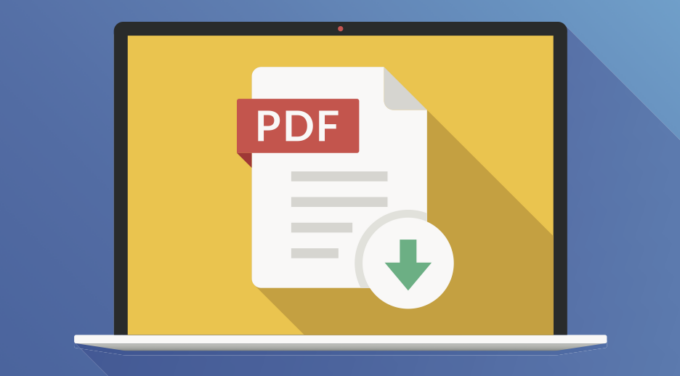Documents make the world revolve. Briefings, contracts, bills, whitepapers, and most publishing indeed happens on a sheet of paper. We are so used to the documents that we simply cannot imagine our life without them. However, we never pay attention to the document file types and their extensions. As they all come with their pros and cons and have different functionality to offer to document creators, let’s have a look at PDF and DOCs files – what is the best file format for college papers.
First things first, consider your teacher’s preferences. Most universities have very strict guidelines about what document types are accepted and what are not. These can be as simple as the rules on styling and the font that should be used. Sometimes, however, they also state which file format the documents have to be sent in. This means that you cannot choose your preferred format and may have to go with what the University, college, or teacher says you should go with.
In some other cases, when there is some wiggle room, you are more than welcome to choose the file type that you are comfortable with. This means that you can also choose the file format for a college paper that is best suited for your needs like for technical writing. These include illustrations, tables, bullet lists, and pillar-writing. Let’s consider some differences between a PDF and a DOC extension.
PDF vs. DOCS? Which to Choose?
PDF and DOCs files are both meant to store text and some images. And while they are great at doing their job, you may have noticed that nobody really edits PDF files. The same cannot be said of DOCs files, as they are the most popular file format to type in. Most institutions actually rely on them. However, if you try to download a text file from almost any website in the world, you will see that PDF is usually the only supported format.
As there are many different document kinds and needs of the people who need to have them written, both PDFs and DOCs survive to this day. WritingUniverse.com, for example, offers assignment and college term paper delivery in both formats. As you may want to edit the document itself, you may want to use the DOCs format. If you want to have fixed pagination and should hand in a task in a printed form, a PDF is better for you.
What is PDF, and What are DOCs?

PDF or Portable Document Format is a file format or a file type developed by the Adobe corporation. It is meant to provide a truly unified and universal way of sending and receiving documents of various sizes and kinds. Today, it is one of the most popular shareable document formats.
DOCs, on the other hand, encompass two different formats: DOC and its newer version, DOCX. Both these text file formats were made by Microsoft and are very popular for making or typing out your documents. The most notable difference is that DOCX files take up around 90% less hard disk for text-only documents.
The biggest difference between the two document file types is how a page is presented. While DOCs formats reconstruct pages of a document as soon as you start opening the file, PDF files have fixed pagination and all elements on the page. So, going through a DOCS file on two separate computers or word processors may give pages slightly altered looks. A PDF is always true to its original form and is recommended for most printing jobs.
Why is PDF Better than DOCS?
The biggest flex PDF has offered to the documents market is its sheer reliability. This file format will always display your page just as you have created it. No images interfering with text placement and no strange overlaps. A PDF file always looks the same, irrelevant of the device you’re browsing the document on. This includes all the images, vector graphics, lists, and tables.
Pros of PDF
- Super-easy to share and download,
- You have complete control over the contents,
- You will be able to eSign documents (some governments even enable their IDs to be used to sign a PDF document),
- Small file size, and
- The ability to password protect the document.
Cons of PDF
- Very difficult to create – there are only a few PDF creators, and none offer all the functionality of a DOCs format,
- Difficult to edit – you will need specialized software, and
- Every change leaves a mark. Most of these carry a time-stamp as well, so issues with privacy are possible, although they do not always happen.
Why is DOCS Better than PDF?

DOCs are better than PDFs for the sheer number of options and formatting they offer to their end-user. Anyone can type out a DOC document, but not everyone can make or edit a PDF. For this reason, Microsoft Office and Microsoft Word are the most popular among college students. Some Universities even demand that the assignments be sent as DOCs files and not PDFs.
Pros of DOCS
- Accessibility – every device supports DOCs files,
- Control over the exact format of the document (DOC or DOCX),
- Easy to learn,
- Cheap for students,
- Easy to edit – anyone can do it,
- Import and export functions are a piece of cake.
Cons of DOCS
- Some versions require a constant Internet connection when writing or editing a doc,
- Almost no official tutorials, and
- Pagination can be a hassle on different devices.
Final Remarks
Both PDFs and DOCs have both pros and cons for college students. Your use of the documents you or somebody else types out should, understandably enough, be used in a very professional and academic way, so choosing the best file format for your document needs is important. With our advice, you are sure to never lose points due to poor formatting or pages lost in printing the materials to submit.
Barbara Fielder
Barbara Fielder is a professional content writer. Her advice has helped hundreds of college students improve their academic performance. A few years back Barbara took up gardening as a hobby. Now, she has a safe little nook to relax in after work.









